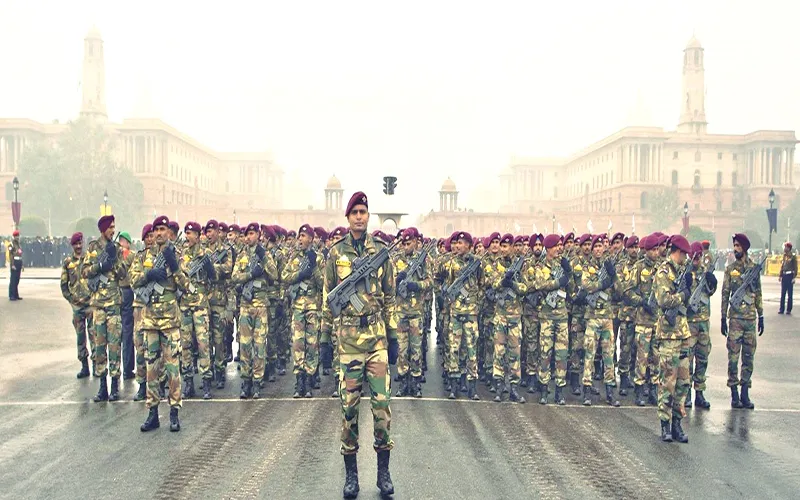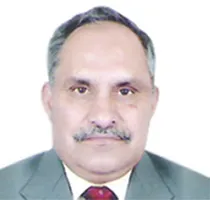-
CENTRES
Progammes & Centres
Location
For more than a decade now, the Armed Forces, especially the senior hierarchy, finds itself besieged by all manners of unprecedented challenges, both from within the establishment and outside. There is critical shortage of weapoins, ammunition and manpower. The blame for this should be shared by political and military leadership.

For more than a decade now, the Armed Forces, especially the senior hierarchy, finds itself besieged by all manners of unprecedented challenges, both from within the establishment and outside. Not only are we critically short of weapons and ammunition but also manpower — especially at the level of junior officers. The responsibility for this state of affairs, in most cases, can be put on an ignorant political class, an inefficient Defence Research and Development Organisation and ordnance factories, or an extremely combative and unresponsive civilian bureaucracy within the Ministry of Defence which exerts complete authority without any accountability.
Sadly, though, the military hierarchy at the highest level must also share a part of the blame. Their inability to disregard personality-driven agendas, red tape, sheer ignorance and, worst of all, inter and intra-service rivalries, have certainly contributed to the problem. However, where they stand completely exposed and isolated is in their inability to either understand the importance of compensation and the convoluted methodologies applied to work them out.
Mr Stephen Dubner, one half of the Freakonomics duo, makes a point when he says that the necessity for attractive compensation to individuals stems, among other issues, from the fact that it signals the true importance of the job and that it attracts the right kind of competent person who would otherwise go elsewhere. Unfortunately, the military hierarchy at the highest level has either just not been able to grasp this simple concept, or, what is more likely, disregarded it for extraneous considerations despite being aware of the adverse impact such decision-making will have on our future operational capabilities.
As it is well known, the Indian Army is one of the largest standing volunteer armies in the world. From within this million plus Army, there is approximately a 10,000 strong volunteer element that forms our elite Special Operations Forces. This includes the Parachute Regiment, which has Special Forces and Parachute battalions, and other combat support and logistic elements that form a part of the 50th Independent Parachute Brigade, which is this country's only strategic rapid deployment force.
Entry into this elite force, like the world over, is extremely difficult and volunteers are selected only after successfully undergoing strenuous physical and mental tests which help in assessing their level of motivation, steadfastness of character and physical and mental toughness. On an average, only about 25 per cent of the volunteers get selected after which they undergo additional specialised training.
The necessity for such a rigorous and challenging selection process is because, they are the cutting edge of our offensive capability and act as force multipliers despite their limited numbers. All these forces are required to operate behind the enemy lines using unconventional tactics. While the Special Forces units operate in small teams and carry out deep surveillance and direct action missions, the Parachute Brigade with its complement of parachute units and other elements uses airborne assaults to carry out intervention operations in third countries, such as the counter-coup operations in the Maldives in 1986, and actions behind the enemy lines, the capture of a vital objective, the capture of the Tangail bridge during the Bangladesh campaign in 1971 that opened the route to then Dacca and its subsequent surrender. In essence, all power projection tasks are undertaken at short notice, over long distances, rapidly and with appropriate force.
While we face serious problems regarding our overall operational abilities, fortuitously our enhanced air assets, in the shape of the C-17s and C-130Js aircraft, have exponentially increased the capabilities of the Parachute Brigade to undertake power projection operations and respond to strategic challenges in our neighbourhood to an extent it has never had since independence, in sync with our rising influence in the region.
Given all this, one can be excused for believing that such a force must be extremely well compensated, as logic must certainly dictate. Unfortunately, there is a dichotomy here and due to historical wranglings within this community, there is a vast difference between the compensation that personnel of the Special Forces units receive and that given to those serving in the parachute units and the Parachute Brigade, a ratio of approximately 8:1. This inequity has not just led to heartburn within the Special Operations community, but also created numerous human resource management challenges.
To cite an example, the volunteers to the Parachute Regiment, all of who undergo similar training, are today allotted to the Special Forces or the Parachute units by a draw of lots, because no volunteer is willing to serve with a parachute battalion. Thus, those who lose out in the draw are de-motivated and unhappy right from the start and they look for opportunities to opt out.
The impact of a skewed compensation policy is easy to comprehend. While the elements of the Parachute Brigade still continue meeting their operational mission, the lack of suitable volunteers has certainly led to lowering of standards and degradation of capability. An attempt to correct this anomaly in the forthcoming Pay Commission was reportedly rejected out of hand by the Air chief on the tenuous grounds that the Parachute Jump Instructors, who belong to the administrative and logistics branches of the Air Force but have no combat role, would require to be paid the same amount as the Air Force Special Forces, the Garuds.
Incidentally, if you are wondering why the Air Force provides the PJIs while the actual combat jumping is done by the Army, it is a historical distortion dating back to the British days and because the Air Force owns the aircraft. Such is the empire building! As per the directions of the service chiefs, they will only get 20 per cent of the Special Forces Allowance. Interestingly, even the Commando Battalion for Resolute Action, the Central Reserve Police Force's Counter-Insurgency Force, gets 80 per cent of what the Special Forces get.
Thus, the spear head element of our country's offensive capability is being slowly but surely degraded and destroyed. Obviously, our service chiefs believe that they can afford to be complacent as given their restricted tenures they will have to be distinctly unlucky to be around when blame is being apportioned for this fiasco, as it undoubtedly will at some stage. They forget that they do not belong to the civil bureaucracy and will surely be held to account within the services, just as the guilty men of 1962 are still embedded in the collective memory of the military and even the country.
(The writer is a military veteran and consultant with Observer Research Foundation)
Courtesy: The Pioneer, June 18, 2015
The views expressed above belong to the author(s). ORF research and analyses now available on Telegram! Click here to access our curated content — blogs, longforms and interviews.

Brig. Deepak Sinha (Retd.) was Visiting Fellow at ORF. Brig. Sinha is a second-generation paratrooper. During his service, he held varied command, staff and instructional appointments, ...
Read More +